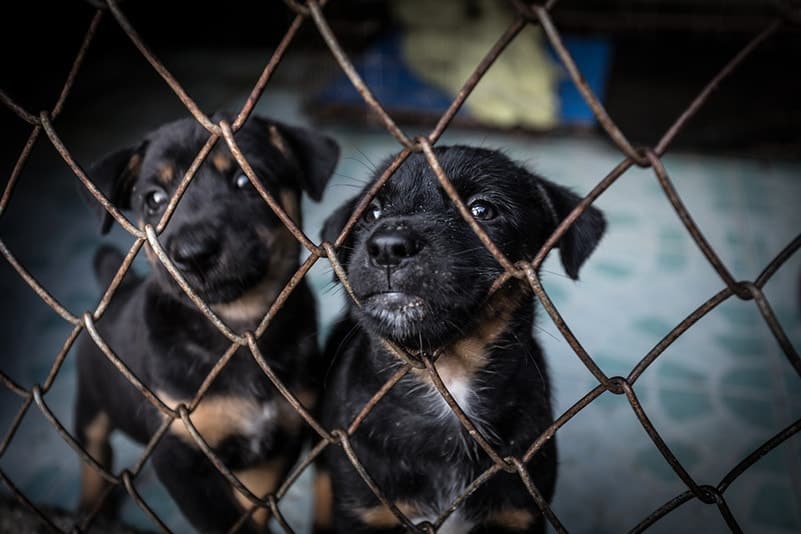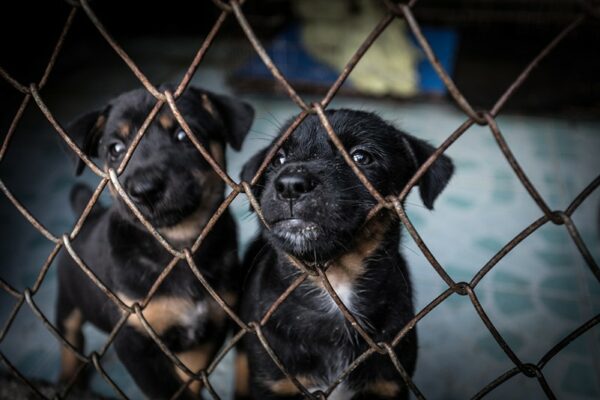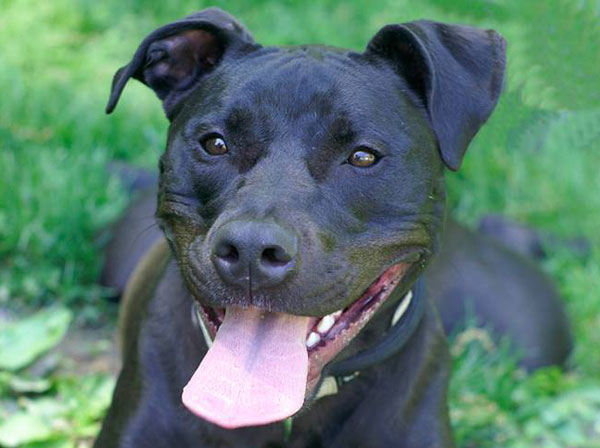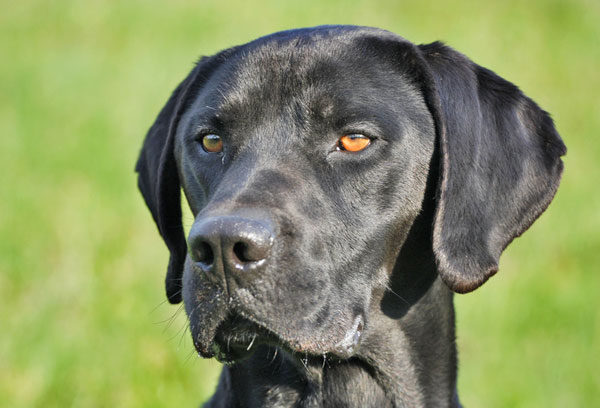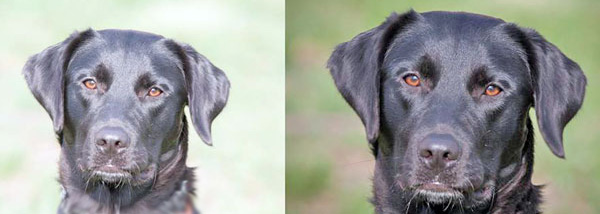Petfinder has designated this week (September 17-23) as Adopt-A-Less-Adoptable-Pet Week, and aims to build awareness about adopting pets who have black fur, are older or have special needs.
Black dogs have a reputation for taking longer to get adopted at shelters or through rescue groups than lighter-colored dogs. This phenomenon, called Black Dog Bias (also known as Black Dog Syndrome), may be due to a number of factors, including fear stigma against certain breed types; the fact that large, black dogs are often portrayed as aggressive in books, movies and on television; or due to superstition. Some potential dog adopters may associate the color black with evil or misfortune (similar to the common superstition surrounding black cats), and this bias transfers over to their choice of dog.
Shelter staff and rescue group workers have repeatedly said that black dogs take a longer time to adopt. However, researchers are divided as to whether the color of a dog’s fur is a legitimate factor when choosing a dog to take home. What is clear is when shelter dogs are photographed to display their best features, it increases their chances of being adopted.
A 2011 study by the ASPCA found that looks do play a role in potential adopters’ selection of a dog, with more than 27 percent of adopters citing appearance as the single most important reason. But the study doesn’t go any further to specify what looks were preferred with potential adopters.
Animal behaviorist Dr. Emily Weiss cites in an ASPCA blog post a recent study that dispute the black dog syndrome. The researchers used Poodles with four variations: large black, small black, large white and small white, and instead found that black Poodles were rated as friendlier than white Poodles. The researchers’ conclusion was that because there are more black dogs in the dog population, there are more black dogs in need of adoption, and this is why it appears that black dogs take longer to be adopted.
Black dogs often don’t photograph well. Their facial features disappear, which can make the dog appear less expressive. Most shelters have websites and also promote dogs for adoption through social media channels, so the prettier the picture, the quicker a potential adopter will fall in love.
Here are some tips for taking better photos of black dogs:
- Avoid harsh sunlight and shoot outdoor photos on a cloudy or overcast day. If this isn’t possible, snap the picture during the early morning or late afternoon/evening hours. Hollywood directors refer to this time of day as “golden time” because of the lack of shadows and flattering warm glow.
- Get down on the dog’s level for a better perspective.
- Avoid having a busy background that may take away attention from your subject.
- If you’re shooting indoors, select an area that has a lot of natural light. Use a fill light or bounce the flash for best results.
- Add a white or bright-colored background, such as a quilt, so that the black dog stands out.
- Another idea is to shoot the dog in profile, to show off his or her features.
- Seth Casteel runs Second Chance Photos, a nonprofit that teaches volunteers how to take photos of shelter pets. He suggests taking the dog on a vigorous walk or run before the photo shoot, “so that he or she will pant, which looks like a smile.”
- Tie a brightly colored bandana around the dog’s neck to add color and contrast.
- If you have an image editing application such as Photoshop, you can adjust the contrast in the shadows to help make a black dog’s eyes stand out.
Do you have a black dog? Did the color play a role in choosing the dog? What do you think about Black Dog Bias? Let us know in the comments!
Read more about black dogs:
- Here’s a Motto We Can Get Behind: “Saving Badass Dogs from Idiot Humans”
- I Met My “Next Dog” at a Kill Shelter — And I Took Him Home
- Friday the 13th: A Lucky Day for Black Dogs
- Black Dog Syndrome: Help Save a Pitch Pooch!
- 10 Tips for Getting Great Photos of Your Dog
- Black Dog Syndrome: Help Save a Pitch Pooch!
About the author: Cathy Weselby is a purple-lovin’ ambivert who enjoys exploring new places and ideas, the arts, humorous memoirs, collecting old magazines and making collages. She and her husband live with Sasha, a rescued Australian Shepherd/Border Collie mix, in the Santa Cruz Mountains.
Featured Image Credit: khlungcenter, Shutterstock

